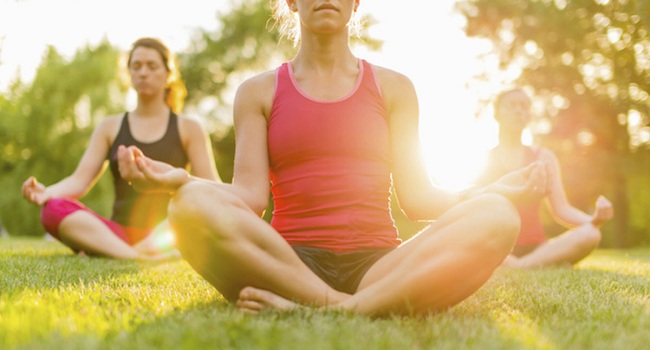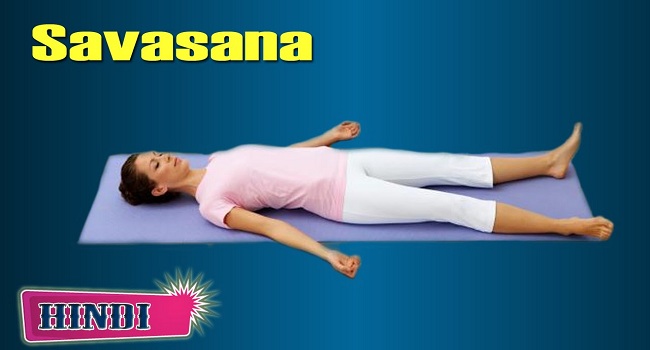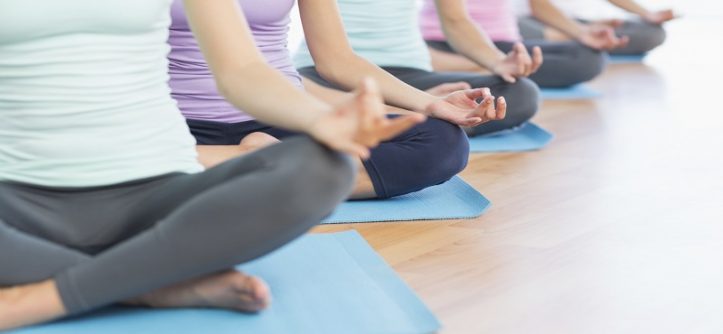Are they the same the relaxation and meditation? Are they two steps of the same process? It is quite common, especially when we start practicing yoga, equating the concepts of relaxation and meditation using them interchangeably. However, although they have some aspect in common are as different issues as breathing and walking? Yes, they can match in time, one is necessary to perform the other, but they are not the same thing.
We start with relaxation in yoga
The relaxation is a process by which we reach a state of relaxation or body relaxation and calm mind in which we experience a sense of lack of tension or at least a reduction thereof. The duration of this process may vary depending on the process itself, the state of each person and the context.
In the sessions of yoga is often used Savasana (the position with arms stretched his back and legs separated) between 5 and 10 minutes at the end of the class to integrate the work done. Also, during the session there are many miscorrelations between asana and asana; Are short spaces during which the practitioner completely loosens his body and rests. That is for many the main function of relaxation in yoga, to replenish the energy after the effort of the asana. On another level, relaxation practitioner of yoga as the principle of exteriorization, of sensory abstraction, and a way of purifying mental conditioning.
For yogis, as for other people, a pleasant environment is something positive, but in yoga, peace is always sought within oneself and does not depend on external factors. Therefore, without neglecting external harmony, the process of yogic relaxation must proceed from the exteriorization and not from sensory stimuli.
In addition, it is necessary to notice a very common error that is to consider the relaxation like a tool to induce the dream. Relaxation is not the same as sleeping when the subject only has the subconscious active. In the relaxation, the practitioner has to stay awake, so that both the conscious and the subconscious are acting simultaneously.
Basic requirements for relaxation
There are some basic requirements when a success of the relaxation, which can also be applied to the practice of meditation:
- Correct posture, which on the one hand allows the relaxation of all muscles, both superficial and deep, and on the other hand that favors sensory isolation.
- Reassure the mind and emotions, through the rhythmic flow of the breath.
- Conscious care of the body and the respiratory process.
- A quiet place, clean, ventilated, but without drafts, with a pleasant temperature, preferably on a blanket or mat on the floor.
- Comfortable clothing, no compression of belts, girdle or fasteners.
- Finally, regarding the duration, it has been verified that in both relaxation and meditation there are important favorable physiological changes related to the practice of the 20 minutes of the session. Therefore, it is best to work at least 20 minutes, especially if you practice relaxation outside the asana session.
Tips for meditation in yoga
The meditation is not a magic act or arising spontaneously but the result of the regular practice of internalization and concentration exercises. Through this continued practice, meditation becomes a process that actively or passively leads us to retrace his steps, to demolish the building on which we have built our reality. There is a very famous phrase of Buddha when he reaches the state of enlightenment: “I have now seen the master beam where the building was built, and it will never rise above it again.” Therefore, what we can call meditation must inevitably produce major changes in inner level.
The meditation also leads us to develop a dynamic synergy between the active-creative abilities with the serene and receptive capacity, unblocking the habits that limit our potential, increasing the creative capacity and intelligence in general and also connects us with others Increasing our empathy. In other words, meditation acts as a harmonizer, not only on oneself but also in relation to the environment.
You May Also Read This: HOW MUCH TIME SHOULD I EXERCISE DAILY?
To walk this path is important to have the support of an experienced person who can indicate to us which exteriorization and concentration techniques are most appropriate for our personal characteristics.
In short, both relaxation and meditation, to be effective and beneficial require, like everything in life, effort, and perseverance. Many people practice one day and become discouraged because they do not notice anything or because all they get is to become more nervous. Hence the importance of having someone who guides us and above all with our constancy and strength of will.
Do you practice yoga regularly? What is your experience with relaxation and meditation exercises?
Tags: Meditation, Relaxation, Treating, Yoga




Leave a Reply